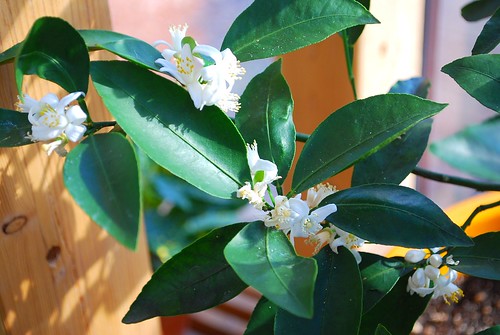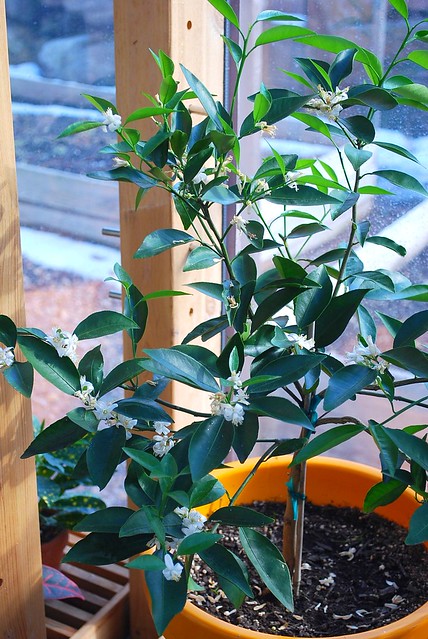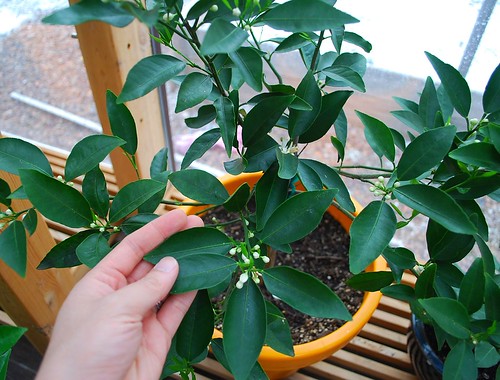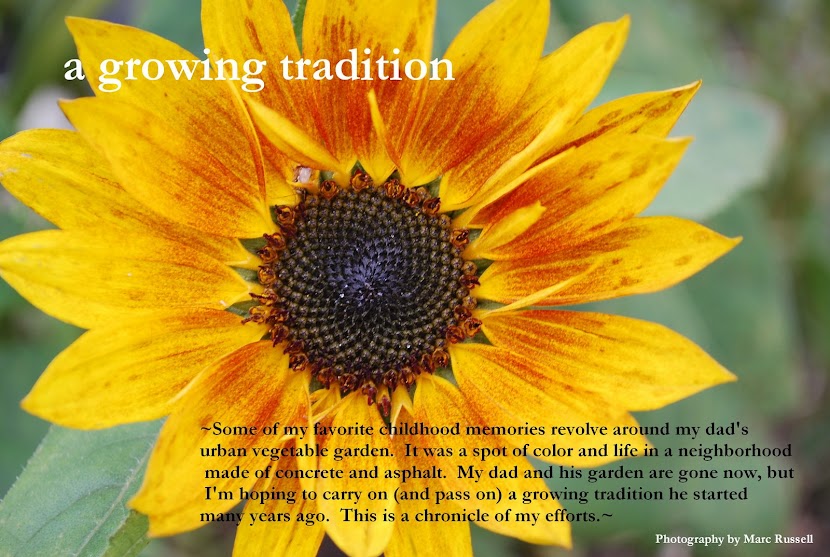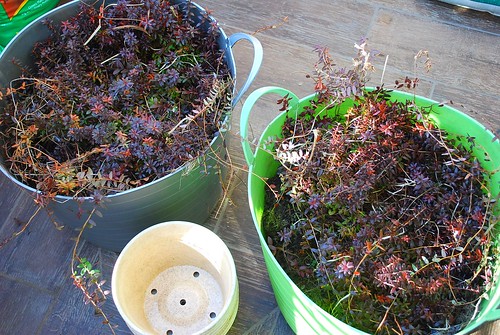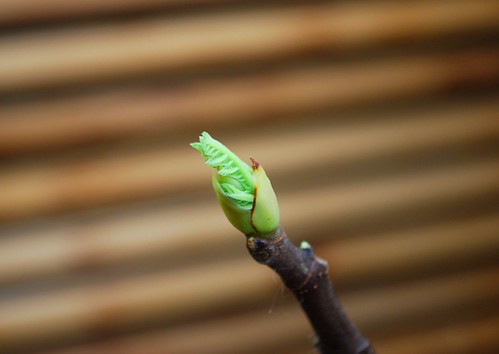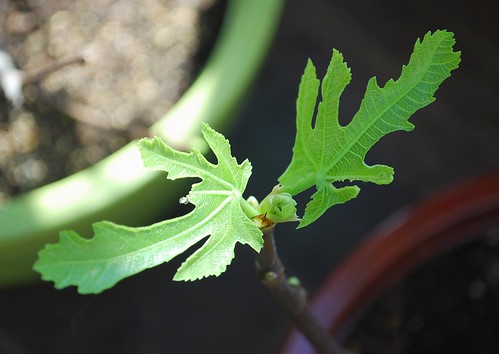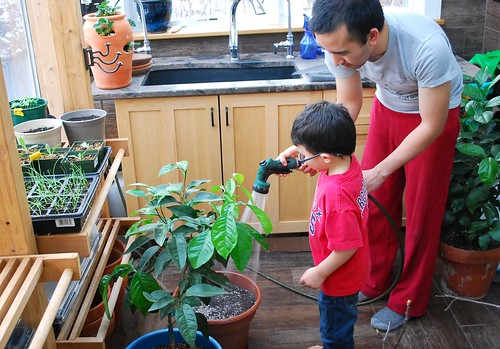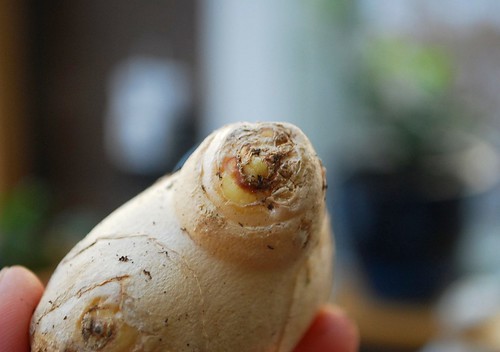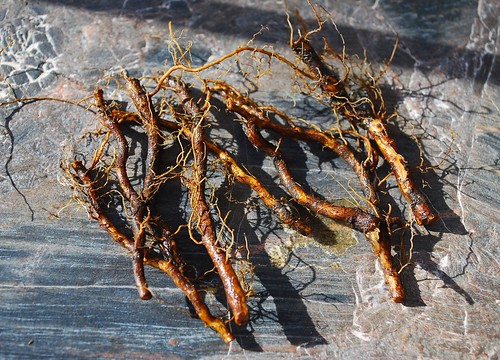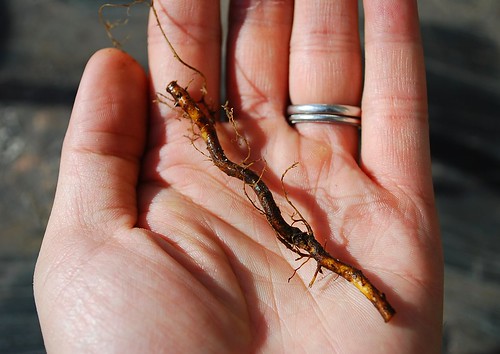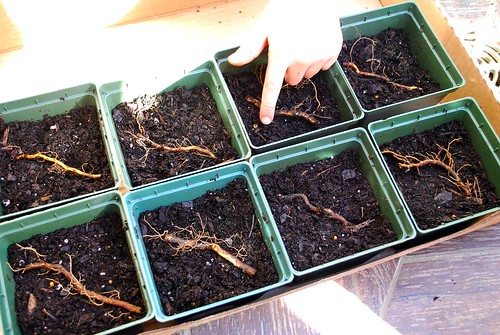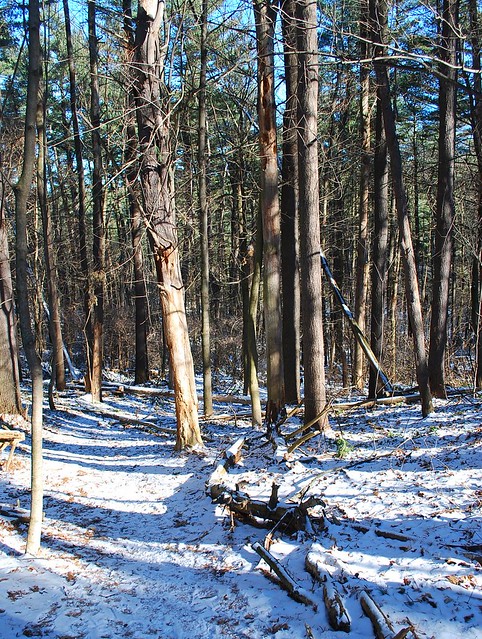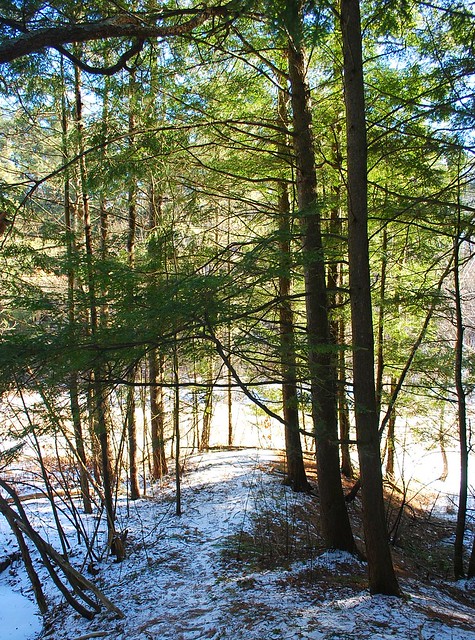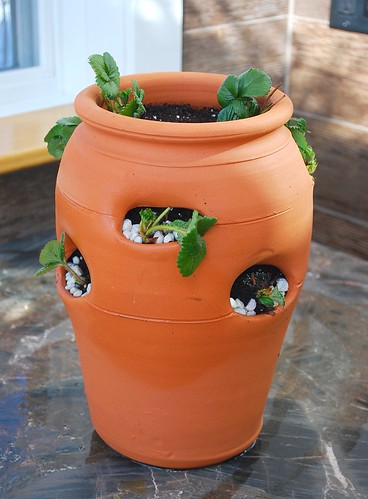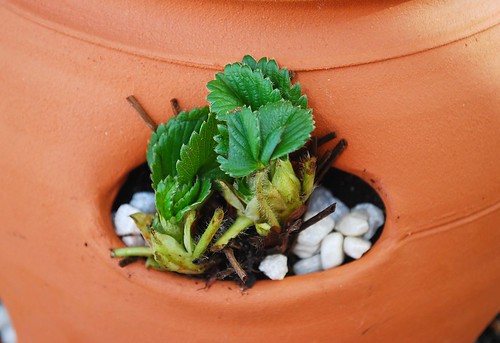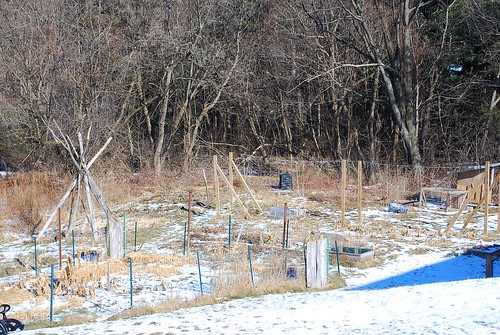
It just hit me that I've neglected to post about our little neck of the woods. Here's a picture of the small community garden that lies within our 4 acre cohousing development. Many families here also have growing beds in front or behind their homes and there are lots of fruit trees and bushes planted throughout the common grounds. My friend and neighbor Dorothy gave me a little tour of her garden today, which includes a rather marvelous looking peach tree that has produced well during the past couple of years. She also gave me a baggy of frozen gooseberries that she grew last summer, which I plan on turning into a dessert for one of our common meals next month.
On that front, I cooked my second common meal for about 40 people yesterday night and I'm happy to say that it went really well. 'Common meals' are held on even numbered days except weekends and allows everyone who signs up a chance to break bread and catch up with their neighbors. I made three different stir-fries and there was not a single spoonful of anything left over by the end of dinner. Preparing a meal for that many people can be quite challenging but I had two wonderful helpers and since I love to cook and feed people, it ends up being quite fun for me. For dessert this time around, I made some Meyer lemon marmalade thumbprint cookies from my homegrown stash and everyone got a kick out of eating some locally grown citrus.
Anyway, directly behind our development is Burlington's
Centennial Woods, which is a 68 acre nature preserve. The paths are quite hilly but it makes for great exercise. And it's nice to have a bit of wilderness close to home and within city limits.
Even at this time of the year, the woods are quite beautiful. I can't wait to see it in summer and fall. (Spring I am told is a rather muddy affair here in Vermont).

And of course you cannot hope to get around without a pair of these. They might as well call Vermont the 'Icy State' because I don't think I've ever lived in an area that gets as much ice as we do. Within the first two weeks of our arrival, I slipped and fell hard twice. These Micro Spikes make all the difference. I can literally run on a sloping sheet of ice with these on. In any case, I'm hopefully that the season for them will be over soon!
Finally, I had handed in my application for a plot at one of the city's community garden sites in early February. The Parks an Recreation worker told me that the site down the street from us was full but there were spaces available at the
Tommy Thompson community garden, which is Burlington's largest site located at the
Intervale and about a 5 minute drive from us. I don't know exactly what the rules are but apparently most of the sites are open to the gardeners sometime in April and close in late October. The land is tilled at the start of each growing year, though returning gardeners can ask for a no-till plot, which would allow them to extend their growing season beyond October. Thank goodness we have the raised beds behind our townhouse to plant a true fall garden. Hopefully I'll get my plot assignment soon.
